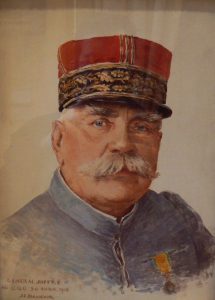
Finest Hour 182
Books, Arts & Curiosities – News from MI5

January 5, 2019
Finest Hour 182, Fall 2018
Page 47
Review by David Stafford
Nigel West, Churchill’s Spy Files: MI5’s Top Secret Wartime Reports, The History Press, 2018, 464 pages, $35/£25. ISBN 978–0750985499
David Stafford is author of Churchill and Secret Service (1997), Roosevelt and Churchill: Men of Secrets (2000), and Mission Accomplished: SOE and Italy 1943–1945, the official history (2011).
In April 1943, as the North African campaign approached its climax in Tunisia, MI5, Britain’s Security Service, began sending monthly reports on its activities to the Prime Minister. Churchill and secret intelligence had been companions-in-arms for most of his political career. As Home Secretary before the First World War, he authorized the use of general warrants for the clandestine opening of the suspected mail and presided over the passing of a draconian Official Secrets Act. At the Admiralty in 1914 he created Room 40, its code breaking operation, and delighted in reading its reports. Since becoming prime minister in May 1940, he had regularly been receiving the products of its successor operation based at Bletchley Park. Its “Ultra” reports based on intercepts were delivered to him personally each day by Sir Stewart Menzies, head of the Secret Intelligence Service.
Now, MI5 chimed in with its own regular reports. Designed for the Prime Minister’s personal consumption only, they were not shared with any of his staff, military advisers, or even the Cabinet Secretary. Each document washand-delivered by MI5 Director-General Sir David Petrie, who took the file back to his office when Churchill had finished reading it. The last of the reports was dated June 1945, after the German surrender, and detailed the fifty or so British and Empire soldiers who had been recruited into the Waffen SS.

2025 International Churchill Conference
Thanks to Nigel West, all these reports have been brought together in a single helpful volume accompanied by his expert commentaries. West has written extensively on MI5’s war, including such celebrated successes as that of the “Double Cross System” and its celebrated agent “Garbo,” which fooled the Germans so brilliantly about the place and timing of the D-Day landings.
Success was also the key word in making the careful selection for Churchill’s eager eyes. What to tell him and what to withhold was a delicate task. The reports had to be kept short, as he was already overburdened with paperwork. Yet they also had to be interesting enough to engage his attention while not encouraging the meddling in detail and occasional impetuosity for which he was notorious. Above all, they were designed to highlight success stories and draw a veil over operations that went awry. MI5 was especially cautious about including reports on cases of internal subversion in case Churchill raised them with the Home Secretary Herbert Morrison. A Labour member of the coalition Cabinet who was fully briefed about MI5’s activities, Morrison shared his Party’s traditional suspicion about the agency meddling in domestic politics.
Interestingly, however, one of the more revealing episodes in the dozens of fascinating cases brought to Churchill’s attention was not the result of enemy espionage or subversion but of simple human carelessness. The March 1944 report included a breach of security concerning a component of the artificial harbours, codenamed Mulberry, being constructed for D-Day. In an excess of zeal to ensure that the work should go smoothly, a Trades Union official had sent out to more than two hundred addresses, including one in the Irish Republic, the minutes of a meeting called to consolidate production. Fortunately, the copy posted to Ireland was intercepted by the censors, and all the others were recovered. So this was a success story. But Churchill furiously demanded to know more. After all, as West explains, the merest hint to the Germans that a scheme had been devised to make the capture of ports unnecessary would betray a central plank of the entire D-Day project. The trades union official involved received a severe reprimand, and all trades unions were warned to be more careful in the future. The case provides telling evidence of how thoroughly wrought up Churchill was about the Normandy landings.
The book reveals a great deal about MI5 operations. What it does not explain is why the agency began sending Churchill reports in the first place. Yet this is no secret. By 1943, the Prime Minister was acutely aware of the enormous domestic powers the security service had amassed. “Look what has happened to the liberties of this country during the war,” he complained to one leading newspaper editor while thinking of the case of the Fascist leader Sir Oswald Mosley, who had just been released after three years of internment. “Men of position are seized and kept in prison for years without trial…a frightful thing to anyone concerned about British liberties.” It was precisely because of such suspicions by Churchill that MI5 decided to disarm him by persuading him of the necessary and excellent work it was doing. It was already clear that at war’s end there would be a bitter inter-service struggle over significantly reduced resources. Some urgent PR by Petrie’s secret army was vital for the agency’s future health and prosperity. West’s volume nicely reveals what a skilled operation they concocted.
Subscribe
WANT MORE?
Get the Churchill Bulletin delivered to your inbox once a month.





